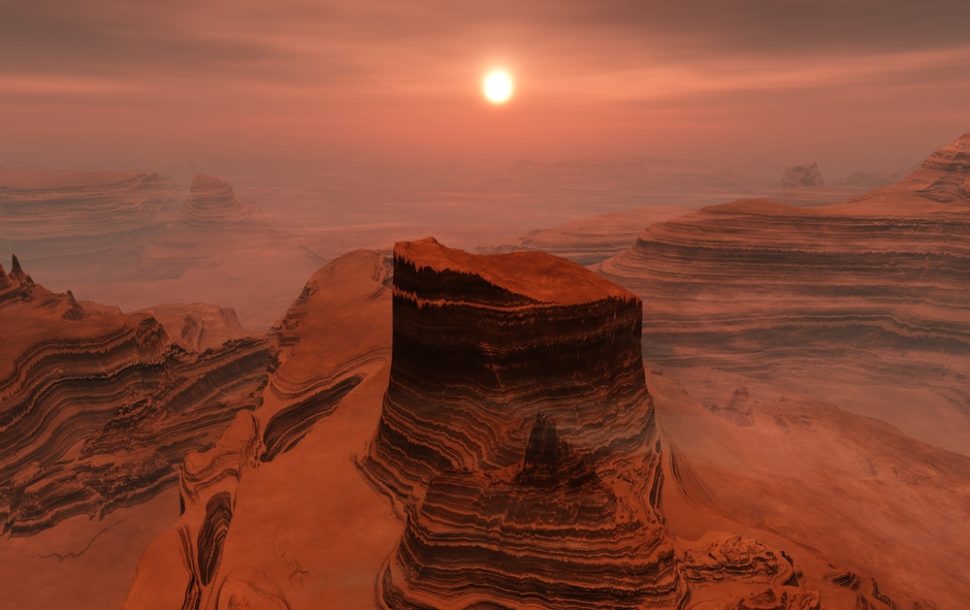NASA‘s recent simulation of the Martian weather shows how clouds move and disperse overtime on the red planet.
The first thing that comes to mind when we think of Mars is an arid desert planet. To an extent, this is true. However, studies show that a small amount of water in the form of atmospheric vapor exists on the planet.
In past studies that involved the Curiosity Rover, NASA has captured images of clouds rolling through the Martian sky. Also, the Insight Lander has snapped similar photos showing sheets of clouds on the planet.
This suggests that the planet has a water cycle that’s similar to Earth’s. Like on our planet, vapors rise into the atmosphere on Mars to form these delicate wispy clouds.
However, the formation process has remained somewhat of a mystery, until now.
In a recent study, NASA used a supercomputer to simulate the Martian weather, showing how the clouds form and move over the course of a day.
Simulating the Martian Weather to Show Cloud Dispersion
The simulation shows the northern hemisphere of Mars.
Viewers can see how clouds form around the equator during the night, only to reach its densest point before dawn. Meanwhile, the clouds slowly dissipate in the daytime and start to reform when the sun begins to set.
Also, the simulation shows the peak of the Tharsis Montes volcano peeking through the cloud.
The researchers at Mars Climate Modelling Center created the Martian weather simulation using computer models. Other past processes that the team has simulated include radiation, air turbulence, and circulation in Mar’s atmosphere.
To analyze the massive data required to create a simulation of the entire planet’s climate, the researchers had to rely on NASA’s supercomputers.
Past studies suggest that Mars once had water on its surface. That means it could have possessed the potential to support life in the past.
By understanding how Mars’s climate work today, the researchers hope to gain insight into the planet’s past.



















Comments (0)
Most Recent